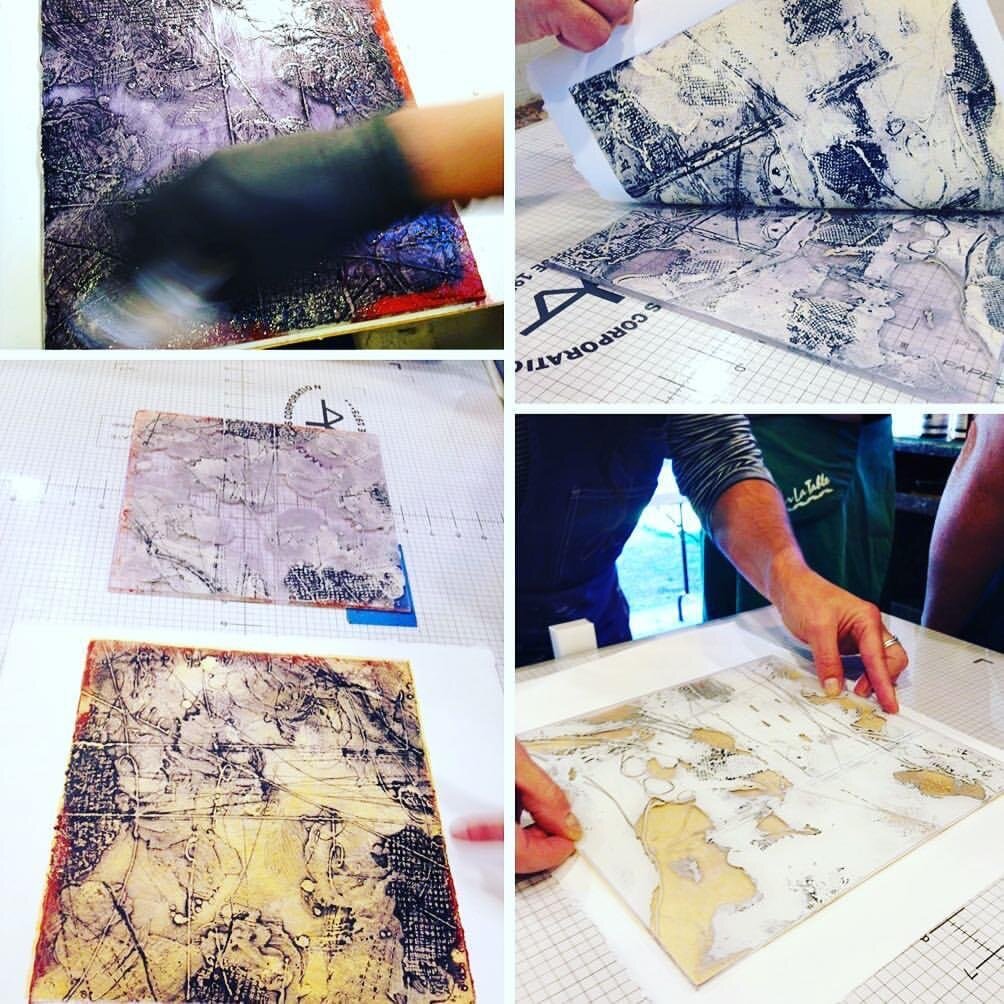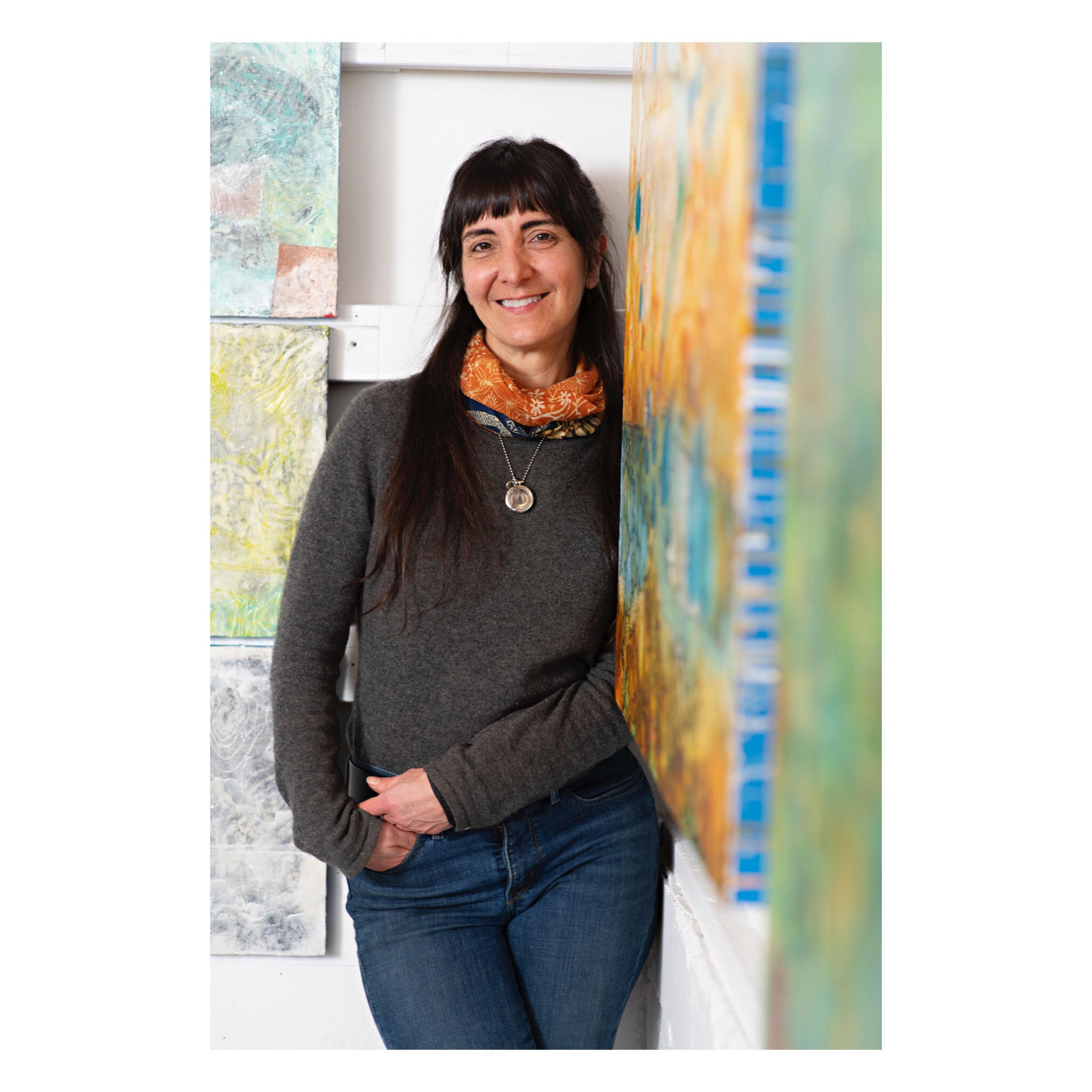From The Collection: Elise Wagner
Elise Wagner, Untitled, 6” x 6”, encaustic on panel, 2015. Permanent collection of R&F Handmade Paints.
We return to our blog series "From The Collection" this week to focus on artist and teacher Elise Wagner. R&F is fortunate to have two pieces by Elise in our permanent collection. Elise is a painter and printmaker who has spent the last three decades of her life in Portland, Oregon. Originally from Jersey City, Elise found the subject matter of her work shifted when she moved to Oregon. With paintings that reference climate change, satellite imagery, and aerial photography, Elise's art focuses on the impact humans have had on their environment and raises awareness of how fragile our existence truly is.
We spoke with Elise about her process, recurring themes in her work, and how she transformed her garage into a studio on wheels.
Please share a little bit about your background.
I grew up in Jersey City, New Jersey and am the youngest of three children. My sister and brother are 10 and 11 years older than me. My parents are second generation German and Italian-Albanian. I’ve lived in Portland, Oregon since I was 19.
Why Portland?
I fell in love over the phone. I was working in the fashion industry as the showroom receptionist while taking drawing and art history classes at New Jersey City University. I spoke with a sales rep from the Northwest region and there was a spark (this was before social media). Sometime later we had the chance to meet and I eventually followed my heart west.
Elise Wagner in her studio in Portland, OR in 1999. The painting behind her was Remote Reference, encaustic, oil, and tar on panel, 42” x 42”.
What I found in Portland was an opportunity to affordably pursue parallel interests in geology, geography, and physics to further feed my art. Enrolled at Portland State University, I studied with Mel Katz, an important artist and a mentor to me. The love that has endured is my love for the unique geology and the grandeur of the landscape here.
You reference your interest in depicting Earth from above. How did this originate?
Growing up and making art as a teenager in a densely populated city like Jersey City surrounded by sky scrapers, my work was all about people, still life, or city scapes. When I moved to Oregon, I was exposed to the expanse of nature. It was the first time I saw the open sky without light pollution. It had a huge impact on me visually and became part of my work.
As time went on, I became more interested in the growing erratic weather patterns of the Pacific Northwest combined with the volcanic and glacial soils that formed its geology from the last ice age. I became concerned with the environment in the 90s when the Northwest Spotted Owl was threatened with extinction by lumber companies. Driving down the Pacific Highway to the Oregon coast I saw the clearcuts. That, and the underlying message of films like Chasing Ice and Koyaanisqatsi, captivated me.
Astral Legend, 51” x 46”, encaustic and oil on panel, 2015. Inspired by vintage images of subatomic particles in a bubble chamber. This was the centerpiece image for my 2020 virtual solo exhibition, This Decade in Painting. Photo credit: Rebekah Johnson
Around the same time I came across “Exploring Space with a Camera,” which was filled with the earliest images of Earth from space from the 50s and 60s. I was in awe. I am still wildly intrigued by aerial photography and archival images from Hubble, the International Space Station, and so on. These things offer perspective on our impact on the Earth and inspire much of my work.
How do the recurring themes in your work relate to your mark making or color choices?
The overarching theme in my work is the impact that humans have had on their environment and navigating nature’s grand indifference. I view my studio practice as a spiritual practice, a way to express my own fragility and raise awareness of how fragile our existence on Earth truly is. Artists are in a constant state of revealing and discovery. My creative impulse is to stay open and negotiate these elements of tension within my work.
One of the things I love about encaustic painting is that it is both fragile and durable - like human beings and our planet. Sometimes the marks in my work reference planetary positions, some are alchemic and Rune symbols.
Valley, 32” x 20”, encaustic and oil on panel, 2019. This piece was part of a solo exhibition at Frederick Holmes & Company in Seattle and was inspired by a massive chunk of ice that broke off of Antarctica. Photo credit: Rebekah Johnson
My color choices are directly related to what I see in colorized satellite imagery. I use iridescent paint and inks for stardust and atmosphere, Paynes gray for blue-hued glacier maps, and a range of other colors to reference shaded topographies, multi-colored cloud forms, and the evergreens of the vast wild nature that is Oregon.
What is your process like?
I work on many pieces at once. Working this way allows time for the practical — cooling and hardening of wax or allowing oil paint to dry — but also time for me to reflect on what each piece is revealing and where it wants to go.
I practiced printmaking in college. In 2002, I began printing from the texture of my encaustic paintings as collagraphs on thin panels. I originally did this with a rolling pin, then on a press using R&F Pigment Sticks. Later, I began using non-toxic soy and honey-based Akua inks and plexiglas or Ampersand Claybord for my collagraph plates.
Do you know where a piece is going or is the development of the work more organic?
One of the things that stands out from learning abstraction in college was detachment, which is the basis of every beginning. I frequently start with a linear structure and topographical lines, or I’ll draw out the scale of a piece’s composition in my sketchbook and think through the steps of a piece and its colors. Often the scale can be the sole inspiration and I rely on chance occurrences in the materials to allow for a dialog between me and the painting. Other times I have a general framework and images of reference that I feel compelled to interpret. I follow NOAA, NASA, and ISS and look at maps, for inspired imagery and color choices as well.
Images of encaustic collagraph prints in process.
Tell us a little about your studio and how you transformed the space.
When I bought my house, it came with a garage. It made sense to give up my giant studio and squeeze it into 400 square feet. I had the garage sheet rocked and insulated, and installed windows and transoms to take advantage of the light. After receiving a Pollock Krasner Foundation Grant, I was able to rewire my studio for encaustic and install ventilation, heat, and air-conditioning. A collector generously gave me a Takach 24” x 48” etching press. Having my own press was a game changer and added a whole new dimension to the studio.
This year I’m installing a new ventilation system and a built-in tabletop hot plate for my wax palette. Everything in my studio is on wheels to accommodate encaustic, oils, printmaking, online workshops, visitors, and gatherings.
Elise Wagner, Untitled, 8” x 8”, encaustic on panel, 2015. Permanent collection of R&F Handmade Paints.
What can you share about your pieces in R&F's collection?
They were created for the International Encaustic Conference Hotel Fair in 2013. In the lighter, more monochromatic piece, I tried to match the colors to old worn paper maps which I’m fascinated with. The other piece expresses my fascination with building history using intersecting line, stencils, incising, embossing and inlaying techniques.
How do you come up with titles?
I never want to project too literal a meaning or concept with my work. Yet at the same time, I want there to be a certain narrative or allegory for viewers. My daily news feed is full of updates about science and discovery. I am consciously or subconsciously thinking about these things while working with the first layers of a painting. Words pop into my head. This also happens when I’m running or meditating. I let words simmer and write them down as they come. I use a thesaurus with a concept index to refine a title to my liking. All of my favorites are circled in there. It is the best reference book in the world.
How many days a week do you work?
As an artist and an art-business owner, I work almost every day. If I’m not in the studio working on a commission or other work in progress, I’m preparing for classes, coordinating with the photographer who shoots my work, talking with my galleries, and so on. Having a studio at home makes it more of a fluid process but with success comes more to do and only the same number of hours in the day to get it done. Last year I was able to hire someone part time to help me with marketing, workshops, and video shoots. Allowing someone else to help me has made a huge difference in the amount of time I’m able to spend making and finishing new work versus responding to emails or coming up with ideas for how to promote my work.
Has your attitude toward painting/ art making shifted as you have gotten older?
Though I’ve dabbled in working in fashion, as an admin in higher education, art materials marketing, and working at a winery, I have never been anything other than an artist. All of my day jobs were a means to an end. I have remained true to myself, to my vision, and to art as my ultimate vocation. There have certainly been times I’ve doubted my purpose and even my own devotion to art. I learned from my teachers and mentors to expect nothing, to keep working and to give my art my very best. I keep showing up, planting seeds, and it never ceases to amaze me that they germinate into opportunities, grants, patrons, commissions, sales, and, sometimes, awards.
Over the years, running and meditation have become integral to my daily life and making art. Both help me maintain clarity when the stress of the world threatens to split my focus.
Elise Wagner in 2021 surrounded by her work. Photo credit: Rebekah Johnson
Where are you represented?
I show at Calloway Fine Art & Consulting in Washington, DC; Gremillion & Co. Fine Art in Houston; and Frederick Holmes & Company in Seattle. Last year I hosted my own solo virtual exhibition, This Decade In Painting. My work is currently on view as part of the online show I Solation, and in a group show at Texas A&M titled Wax Applications: Exploring the Depth and Breadth of Encaustic and Cold Wax Mediums.
To learn more about Elise, visit her website: elisewagner.com.







